Power Survey Menu
Contact or Stray Voltage Shock Incidents
The Current Danger: Unseen and Unforgiving
One of the benefits of below-ground electric utility infrastructure is that it can remain unnoticed. Unfortunately, “unseen" sometimes means that major hazards can go undetected. It is from this place – out of sight - that contact voltage (often called stray voltage) poses a costly and unforgiving threat.
Contact voltage presents a non-trivial danger to the public and their pets – especially those located in urban areas served by underground electricity distribution systems. Incidents related to contact voltage occur far more often than most people realize, and the results can be devastating. The electrocution deaths of 30-year-old Jodi Lane and 14-year-old Deanna Green are just two well-known cases.
Given the horrific nature of these cases, some claim that the media has sensationalized the issue. The data shows something very different. Too many cases of shock and electrocution caused by contact voltage remain under-reported and too often minimized as rare, unpredictable anomalies.
Only 79 incidents were reported by the media in a 15-year period.
23,000
Incidents Estimated
Nationwide
2,161
Incidents Reported
Only Three States
1,500
Incidents Per Year
Defining Contact Voltage and Stray Voltage
The terms "contact voltage" and "stray voltage" describe different forms of voltage that may be present in electrical utilities, and which pose a potential risk to the public. While they’re often confused with each other, there are important differences.
- "Stray voltage" - Stray voltage results from the normal delivery or use of electricity that may be present between two conductive surfaces that can be simultaneously contacted by members of the general public or animals. Stray voltage is not related to electrical faults. Despite this, media reports often use the term "stray voltage" when the event would be more accurately attributed to contact voltage.
- "Contact voltage" – Also related to underground electricity distribution systems, contact voltage refers to the potential difference that may exist between conductive surfaces and the ground when a fault occurs in an electrical utility system. This fault may occur due to aging infrastructure like the deterioration of underground cables, weather events, or other factors. Contact voltage can happen at potentially hazardous levels above 50 volts. Unlike stray voltage, contact voltage poses a more direct and significant safety hazard to members of the public and their pets, as it can cause electric shock or electrocution. Common urban objects like streetlights, manhole covers, traffic signals, playground equipment and fences—even concrete—can become energized and dangerous.
Recent Data Reveals the Under-Reported Risk
Osmose recently examined 15 years (2007 to 2022) of U.S. and Canada media-reported contact voltage injuries to humans or pets as well as publicly reported data by the few U.S. states where such reporting is mandated. The study found that, during this period, there were 2,161 contact voltage shock or electrocution incidents acknowledged by electric utilities in the three states where such reporting is mandated – New York, Maryland, and Rhode Island. These three states represented 9 percent of the U.S. urban population in 2020. Of the reported incidents, 1758 harmed people and 417 harmed their pets.
Extrapolating the incident rate to reflect electric utility infrastructure across the full U.S. population equates to a nationwide estimate of 23,000 incidents occurring during this time period. Divide that by the 15 years and you get 1,500 incidents per year in the U.S. alone.
Of the 23,000 estimated contact voltage shock and electrocution incidents affecting people and their pets, only 79 were reported by the media.
Beyond the reported or estimated incidents, the potential for greater damage abounds. Power Survey - the first and only mobile scanning system designed to identify contact voltage faults - has detected 250,000 energized structures in 75 cities since 2006 – an average of over 3000 energized structures found per city.
Further recognizing the real and looming threat of contact voltage, leading technical and research organizations have formed initiatives to address the matter. For example, the Institute of Electrical and Electronics Engineers created the IEEE Stray and Contact Voltage Working Group which maintains and updates the IEEE 1695 Guide to Understanding, Diagnosing, and Mitigating Stray and Contact Voltage.
Contact Voltage is Not a Black Swan
It may be convenient to dismiss harmful shocks or electrocution caused by contact voltage – as black swan events: terrible, high-impact situations, but unprecedented, unpredictable, and extremely rare. The reality is, severe contact voltage faults – and the physical harm they may cause - are well-precedented and can be anticipated, although their likelihood or timing is uncertain. For example, using a mobile scanning system, a utility asset owner can not only identify faults that result in presently energized structures, but they can also find and fix faults in the early stages of development – before they degrade into bigger problems. With contact voltage – neither the equipment faults nor injuries caused by those faults are black swans. They are, at best, gray swans.
Prevention Starts with Reliable Detection
Neither “sensationalizing” nor “underreporting” the real threat of contact voltage is a productive response. In markets where the risk is high, a consistent program of detection and remediation is the responsible, measured solution – whether government-mandated or not.
However, contact voltage cannot be reliably detected with a manual or visual inspection. Successful, scalable detection requires a sophisticated electric field detection system focused on uncovering high-impedance faults in underground distribution systems.
2 Dogs Dead After Being Electrocuted in DC
Monday night it was reported that dogs were shocked to death on a sidewalk. Read more
The Problem
Undetected secondary faults can have serious consequences
and are often the source of many distribution systems events.
- Electric shock reports by the public
- Electric service quality complaints
- Customers equipment damage
- Manhole fires and explosions
- Increase system losses
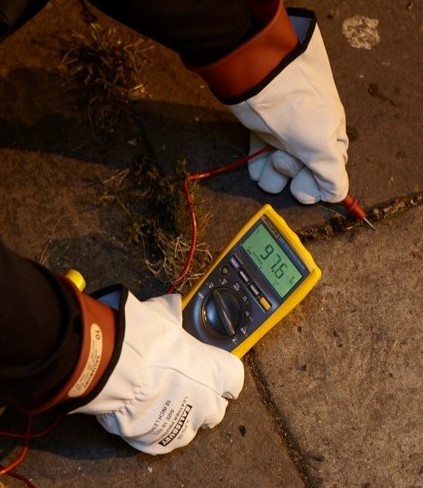
Root Causes
Cable Damage
- Construction dig-in
- Tampering by the public
- Vehicle accidents
Aging Infrastructure
- Thermal aging of insulation
- Chemical degradation
Workmanship
- Improper joint construction
- Insulation damage; installation
- Improper wiring (reversed polarity)
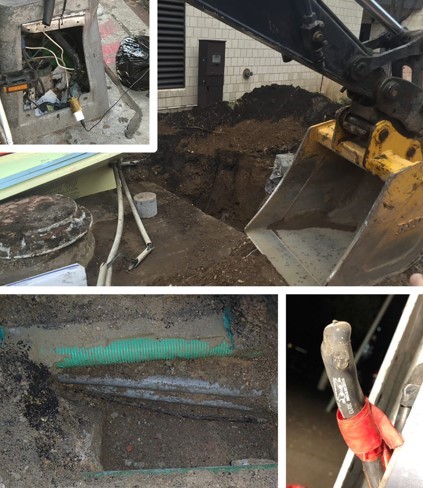
.png?width=243&name=Osmose-logo-(white).png)
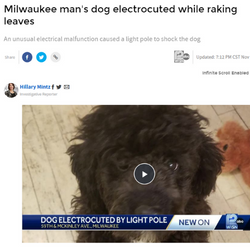

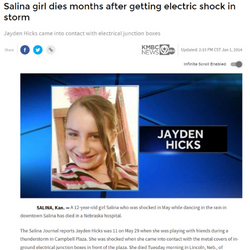

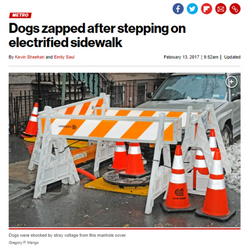
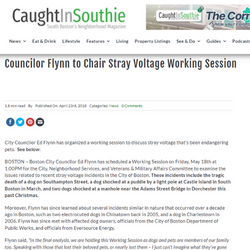
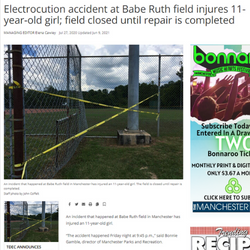

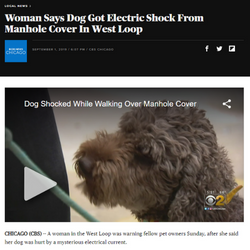
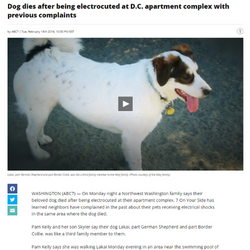
.jpg)